The name Hayao Miyazaki is synonymous with magic. The Japanese animator and filmmaker announced his retirement in 2013. However, his decision to return to filmmaking gave “The Boy and The Heron” (2023) its first seed of thought. He started sketching ideas for three years, with the film officially going into production in mid-2017, aiming for a 2020 Summer release. Two major roadblocks in the production came with the passing of co-founder and beloved friend Isao Takahata and the pandemic.
However, Miyazaki’s dedicated fans waited patiently for his latest adventure as the title of the film, which drew its Japanese title from the 1937 novel Kimitachi wa Dō Ikiru ka by Genzaburō Yoshino, was announced. Considered one of the most expensive films ever produced in Japan, “The Boy and The Heron” bagged numerous awards, including the BAFTA, Golden Globe, and Academy Awards.
The screenplay of “The Boy and The Heron” (2023) is heavily influenced by Miyazaki’s life, exploring themes of death and loss, coming of age, and how to operate in a conflicting world that is slowly dying due to war and environmental hazards. In collaboration with his long-time composer and friend, Joe Hisaishi (“My Neighbor Totoro,” “Princess Mononoke,” “Spirited Away,” “Howl’s Moving Castle”), the film’s background score reflects pain, sorrow, loss, hardship, and ultimately acceptance of life and fate. The original song ‘Spinning Globe,’ sung by Kenshi Yonezu, was requested to be written as the theme song four years prior to the film’s release.
The film follows the life of a young boy named Mahito, who is grappling with grief and sorrow after his mother’s death. When he discovers an abandoned tower and a talking heron, his life takes a fantastical turn.
In this article, I have tried to explore the film in detail, diving into its many themes and symbolism. Please note that the article is full of spoilers. Viewer’s discretion is advised.
The Boy and The Heron (2023) Plot Summary & Movie Synopsis:
The movie opens with our 12-year-old protagonist, Mahito, losing his mother (Hisako) in a hospital fire. The horrific scene directly references Miyazaki’s own life when he lost his mother during the Pacific War. A year later, the young boy leaves the bustling city of Tokyo to move to the picturesque countryside, as his father, Shoichi, decides to marry Mahito’s aunt, Natsuko. While Mahito is still grieving his loss and adjusting to the fast changes in his life, he also discovers that he is set to become a brother when Natsuko takes his hand to feel her baby bump.
Natsuko is empathetic and gentle towards Mahito, understanding his inward, reserved nature, which has taken precedence ever since the incident. She patiently introduces him to their new life and explains how things function around the mansion. As they enter the gates of the house, Mahito notices a giant grey Heron flying past him. Natsuko remarks that this is such a rare occurrence, and we are aware that there’s more to it than just that. After settling into his room, Mahito falls asleep at once, only to wake up when his recurring dreams make him anxious. In the dream, he often finds himself chasing the echoing voice of his mother, who is calling for him. Later, he tiptoes around the house but retreats to his room after seeing his father cuddling his new wife.
Why does Mahito hurt himself?
The following day, when the grey Heron teases him, “Mahito, your mother is alive,” the boy follows the bird, leading him to a sealed tower that was the last location Natsuko’s greatuncle was ever known to be. Mahito decides to follow the tunnel to catch the bird but is called out by the housekeepers. Later in the night, Natsuko explains that her great uncle, a famous architect, mysteriously disappeared. This led to the tower being sealed after a portion of it was severely damaged due to flooding.
In the meantime, we discover that the local boys bully Mahito for being different from them, leading our protagonist to inflict pain on himself by hitting a rock on his head. While Shoichi is adamant about avenging his son’s pain, it seems like Mahito deliberately does it to avoid going to school.
What does the Heron tell Mahito about his dead mother?
Meanwhile, the Heron summons Mahito to meet him, informing the boy that his mother is alive and he knows where she is. While Mahito is taken aback by the Heron’s claims, he also finds himself buried by a swarm of magical toads, almost pressuring him to follow the Heron’s commands. However, he is saved by Natsuko and her troops with a kabura-ya (a Japanese arrow used by the samurai).
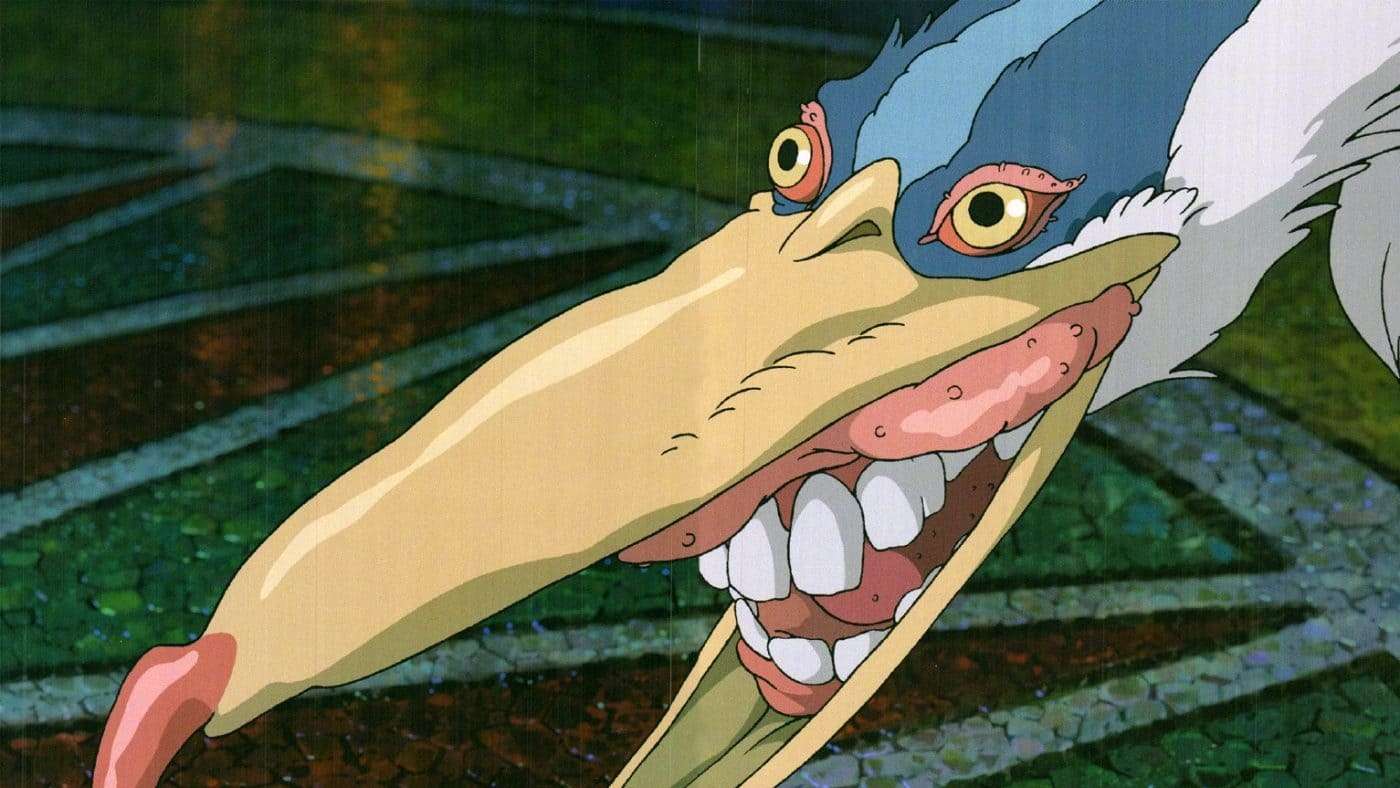
His adventure to find out more about the Heron becomes a newfound purpose, especially when Natsuko suddenly falls sick due to her overbearing pregnancy phase. Keeping mostly to himself, Mahito stumbles upon his mother’s book, How Do You Live? by Genzaburo Yoshino, which inspired the film’s Japanese title. When he notices Natsuko walking into the dense forest and everyone in the house looking for her, he decides to go find his stepmother. He uses the Heron’s feather and crafts his own bow and arrow, which are very similar to the one Natsuko used to save him.
Is Mahito’s mother alive?
While he is adamant about following the Heron and finding his stepmother, one of the maids from the estates named Kiriko tells him that only true bloodline can hear the Heron’s voice, and he must not follow his intuition. Determined to save his mother this time, Mahito reaches the tower gate, which is our pit stop to the magical realm that Miyazaki usually takes us through in his movies.
At the entrance of the gate, he hears the Heron’s voice and follows him into the tower. However, the inside of the rendezvous point looks like Natsuko’s greatuncle’s library, filled with thousands of books and scriptures from all around the world. The Heron shows Mahito, his mother, sleeping on a sofa, and as Mahito reaches out to her, he discovers he has been tricked by the bird. The talking Heron looks like a man inside a bird suit, ironically called Birdman, who seems untrustworthy. Briefly, we also see a shadowy figure up on the tower’s roof, dissing the bird for his silly actions.
Is Natsuko’s great uncle really dead or just hiding away from the world? Perhaps he is a mystical character Mahito is imagining, or maybe all of this is just a dream. These are the questions we will explore further. So, after his interaction with the Heron, Mahito, Kiriko, and the Heron are teleported to the magical realm, which leads to a whole new adventure for Mahito.
Where does Mahito go in the magical land?
After descending into an oceanic world, Mahito is attacked by pelicans who are trying to enter the forbidden land after him. However, he is rescued by a fisherwoman using fire with her magical wand. The woman then orders Mahito to help catch a giant fish as they sail to her place. On their way, they encounter spirit-like entities (very similar to the ones in “Spirited Away,” resembling the character No Face).
What is a Wara-Wara?
Upon reaching her place, the woman sells the fish to bubble-like spirits known as Wara-Wara, recurring spirit characters similar to those in “Princess Mononoke” and “Spirited Away.” These cute little spirits feed on the fish’s intestines and then fly to the world above, only to be reborn. However, as the Wara-Waras are flying, the pelicans start feeding on them. This is when Mahito notices a young girl throwing fire at the pelicans to save the Wara-Wara.
Who is Lady Himi?
Mahito learns from Kiriko that the young woman is Lady Himi, who can create and control fire with her mind and is the sole protector of this realm. Later, Mahito also learns from a dying pelican that these birds were feeding on the precious spirits because they were desperate to survive after being introduced to this world with no other resource or purpose.
Mahito also recognizes that the Kiriko of this world is a younger and bolder version of the elderly Kiriko he left with earlier. Meanwhile, the Heron has been following Mahito all this time and even requests that he give him another chance (his lying tendencies have made him quite distrustful and unreliable to Mahito).
Kiriko brings about a reconciliation between Mahito and the Heron so that they can become a team and embark on their journey to find Mahito’s mother together. Before leaving, Kiriko hands a wooden figurine of the older Kiriko to Mahito, wishing him good luck with the hope of finding what he is searching for.
Why do the Parakeets want to kill Mahito?
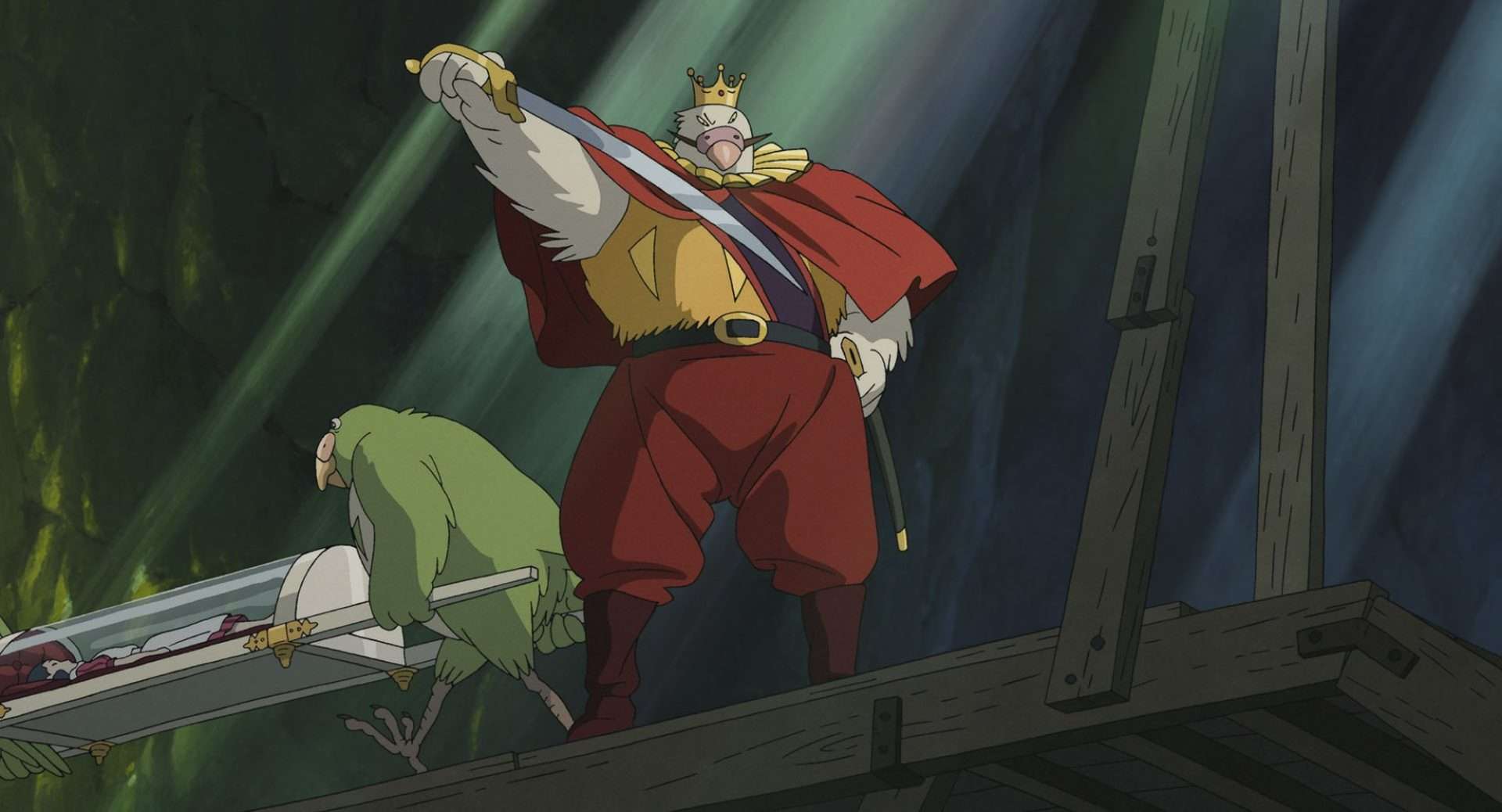
Mahito and the Heron form an odd bond, and Mahito even fixes the Heron’s beak, leading him to return to his magical form, where he can fly again. As they traverse through the mystical land, they encounter man-eating Parakeets who, it seems, are guarding something. While the Heron distracts the Parakeets, Mahito enters the heavily guarded tower. However, he soon gets hounded by the birds, ready to eat him alive.
How is Mahito related to Lady Himi?
Himi soon saves him, taking Mahito into her place using her pyrokinetic abilities. Mahito instantly recognizes the vicinity as Himi tells him that her house is opposite the tower from his world. Mahito realizes that Himi is actually the younger version of his mother when she serves him delicious homemade jam, butter, and bread – something that his mother used to make for him.
Himi then takes Mahito to the counterpart of the tower that has different doors to many worlds. One of the doors leads to Natsuko’s estate, and while Mahito is advised to hold on to the door, the young boy gets spotted by his father. However, Mahito is not yet ready to get back to reality and is still determined to find Natsuko. So he turns to the magical world again.
Does Mahito find Natsuko?
Both Himi and Mahito somehow infiltrate the Parakeets’ kingdom, and soon, Mahito finds his stepmother in a delivery room. Just when we thought Mahito would be able to save Natsuko, she wakes up to find the boy by her side and gets really mad at him for following her here. Seeing Natsuko in such a condition, Himi tries to persuade her sister to come along with them.
Since the king of the Parakeets has taken Natsuko as his hostage to impress the sorcerer of this world and attain the power to rule the realm, he has embellished the entire vicinity with magical spells that would keep Natsuko away from her world. As Himi tries to burn down the room using her power, the Parakeets are alerted about the infiltration, and soon, Himi, Mahito, and Natsuko pass out.
Upon waking up, Mahito finds Himi being taken somewhere by the king of Parakeets and his troops. When he tries to follow them, the king destroys the path, causing Mahito to fall back. Meanwhile, Heron finds his way to Mahito and helps him follow King Parakeet, who passes through a bright passage inside the tower to meet the Great Wizard for the treaty.
What are the true intentions of the Parakeet king?
The king of the Parakeets is greedy for power, wealth, and the rulership of the world. Much like the wizard, who is somewhat obnoxious, the king is crude, ruthless, and persistent in getting what he sets his mind to. He believes that the wizard will give away his legacy to someone who will not understand the mechanics of this world. The king also fears dominance over his kingdom by someone with zero understanding of their world and to avoid further chaos or disruption. He eagerly wants to take power into his own hands to rule his kingdom as he pleases. This basically means that the Parakeet king wants to be the sole ruler of the fantasy world.
How is Hisako’s disappearance related to Mahito’s quest?
Meanwhile, back in the real world, Shoichi learns the great secrets of the tower from the housekeepers. It turns out that Natsuko’s great-uncle had built the tower when a meteorite hit the place. Coincidentally, young Hisako also disappeared for a year until she returned looking the same. This brings us to the correlation between the events here—how young Hisako entered the magical realm only to encounter Mahito, who is on a quest to find his mother.
Who is the old man in The Boy and The Heron?
Mahito and Heron manage to save Himi from the Parakeets and meet the sorcerer, who happens to be Natsuko’s great-uncle and the great wizard (in my opinion, he is Miyazaki himself that you can find more about in the themes section) of this realm. As we are formally introduced to the wizard, we realize that he is the same figure we saw earlier in the film. The old man looks occupied with a stack of stone blocks, trying to place them carefully on top of one another.
Why did the great wizard send the heron to get Mahito?
According to the wizard, the blocks represent different dimensions that must be carefully dealt with. Since Mahito belongs to his bloodline, he requests that the young boy take over the custodianship of this world. We also find out that Natsuko’s great-uncle had mysteriously entered this realm and, ever since, has been guarding it using these stones and blocks of power. When he learned about Mahito, he sent Birdman (aka the Heron) to the young boy to bestow his power upon him as a successor.
The Boy and The Heron (2023) Movie Ending Explained:
Why does Mahito refuse to take custody of the magical world?
Mahito is not pleased with the wizard’s actions, as the foundation of this realm is malice, and he claims he will return with his mother to the real world. The great-uncle explains that Mahito can rule the world with love and compassion and without malice, as the world is crumbling and has become a hopeless place to live. However, Mahito feels that his earlier actions of hurting himself are not a great place to start, and he wishes to learn more about life and how to live a malice-free life himself before he gets to understand the more complex things in life.
Why does the magical realm crumble down?
Fearing the loss of his opportunity to gain power, the Parakeet King intervenes in the conversation. He tries to fix the crumbling blocks, but when he is unable to, he slices the objects out of frustration, resulting in the magical realm’s collapse. Mahito, Himi, the Heron, and Natsuko rush to escape the realm, which is rapidly falling apart.
Does Mahito save his mother in the end?
During the climax of “The Boy and The Heron,” Mahito warns Himi about her death in the fire as they stand in front of the doors of the alternate dimensions. However, Himi explains that she will embrace her life as she no longer fears fire, and he, too, must embrace life upon returning to their respective lives.
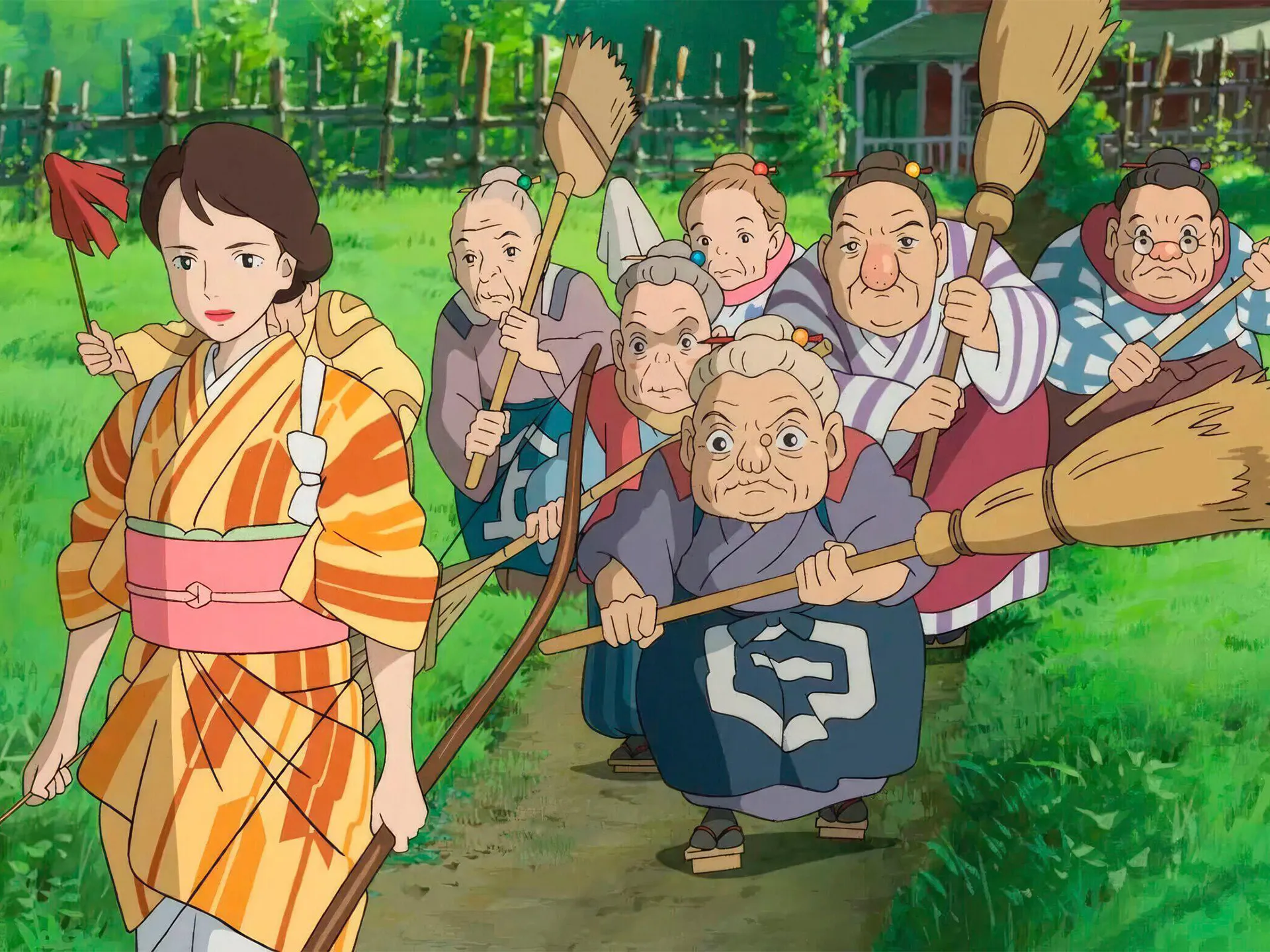
Himi opens the door to her real life before WWII, showing that she somehow survives the war and gives birth to Mahito later in life. Mahito, Natsuko, and the Heron return to their world, reuniting with Shoichi in the end. Kiriko’s wooden figurine inside Mahito’s pocket makes a movement, and soon, an elderly Kiriko is restored to her human form, thanking him for her safe return home.
What does the Grey Heron tell Mahito at the end of The Boy and The Heron?
The ending of “The Boy and The Heron” shows the Grey Heron bidding goodbye to Mahito, telling him to forget his encounter with him because he has to eventually let go of his past. The Heron then flies off and turns into a folded stone creation attached to one of the tower’s sealed windows.
A year later, Mahito packs his bag as his family, with the new addition of his baby brother, waits for him to leave for Tokyo.
The Boy and The Heron (2023) Movie Themes Analysed:
Keeping in mind the metaphors Hayao Miyazaki explores in his latest film, “The Boy and The Heron,” here are the film’s themes explained.
Grief, Loss, and Coming of Age
Grief is a strange emotion, especially for a 12-year-old boy who has lost his mother at such a young age. Suddenly losing a safe space in the form of his mother gives us a first-hand look at Mahito’s life as he experiences sudden changes.
Miyazaki lost his mother when he was a boy, and later, while working on the storyboard of “The Boy and the Heron,” he lost his dear friend Isao Takahata (one of the founders of Ghibli Studios), whom he always sought advice. These self-referential points weigh heavily on the narrative of “The Boy and the Heron,” making it one of his most personal works in a career spanning over three decades.
The grief and loss shown through Mahito’s character also explain how children who are unable to fathom life’s unpredictability process their emotions differently. Mahito travels through the magical realm, following his intuition of finding and saving his mother. However, in reality, he can’t do that. Mahito’s coming-of-age takes place when he actually understands that being stuck in the past or in his own fantasy will not lead him anywhere and will only bring him more pain and sorrow.
Fantasy, Reality, and Transformation
We often create our own fantastical world when we experience a difficult emotion. Sometimes, we tend to live in this world for so long that we cannot distinguish between fantasy and reality. Mahito’s entering the magical world is his way of processing and understanding his way of life. However, when the grand wizard offers him the responsibility of ruling the magical world, Mahito realizes that he can’t keep living in a loop of his own trauma. He wants to return to his reality because he understands that he has years ahead of him. These years ahead might bring him more trauma, but at least that will be because of the inevitability of life and not because of his own choosing.
To double down, when we encounter distressing moments in our lives, we realize that living inside our darkest moments will only bring us down, and transformation only takes place when we have the vigor to face the challenges that come upon us. Coming back to reality from the magical world, we see a transformed and confident Mahito who has accepted his fate and is ready to face whatever comes his way.
Nature, Environment, War and Peace
The film’s beautiful animation symbolically connects humans with nature, especially when it transports us into a magical realm, illustrating how they can coexist without disrupting the natural cycle. The setting features lush landscapes, a magical forest, and endearing spirits like Wara-Wara, who symbolize life and highlight how frequent instances of war and crime disrupt life’s synchronicity.
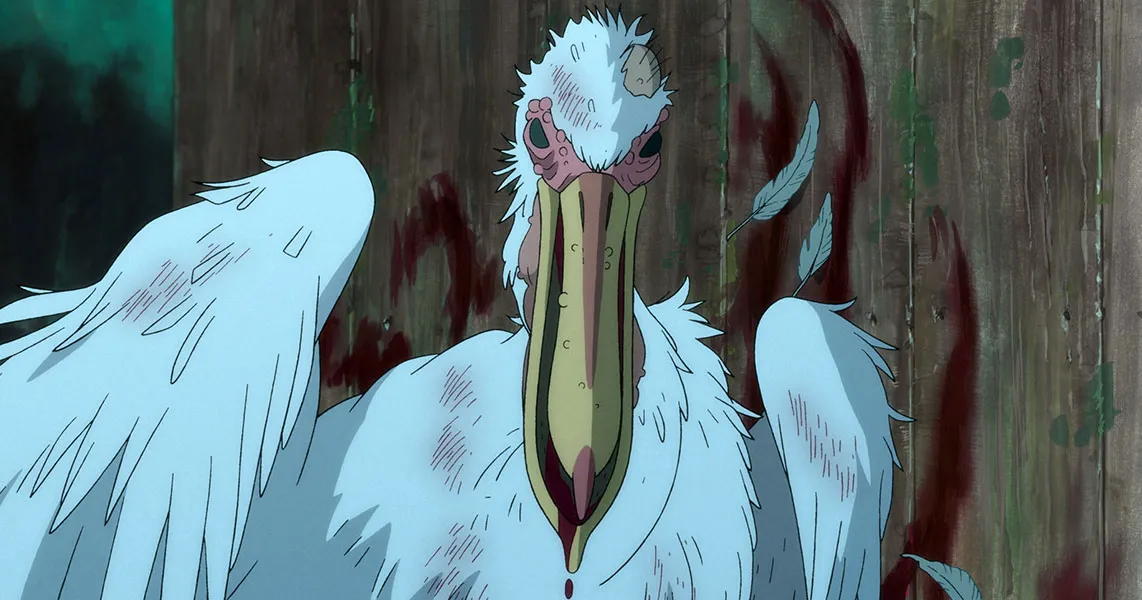
When the Grand Wizard mentions the world crumbling under bad intentions, greed, and the thirst for power and wealth, he refers to the ongoing wars and crimes worldwide. Drawing from personal experiences of witnessing war, Miyazaki explores the dark theme of how war, driven by malice, destroys the inherent peace provided by nature. He emphasizes that even in present times, conflicts continue to engulf innocent lives and disturb global harmony.
Family, Relationship, and Identity
Losing a parent at a very young age can scar a child for life. It is as devastating as a house with a broken foundation. After losing his mother in the fire, Mahito found it extremely difficult to accept Natsuko as his new mother. This led him to adopt a quiet and reserved nature, avoiding interaction and keeping his feelings to himself. Inflicting harm on himself to avoid going to school, where he was potentially bullied for having a different life than others, signifies that the pain reminds him that his suffering is real and ongoing.
On the other hand, the grey heron in the film symbolizes his deep sadness, echoing his profound desire to save his mother from dying. The dynamics within the family explore Natsuko’s innate efforts to bond with her nephew, who is now also her son, and her wish for a peaceful life for him. As Mahito navigates the new family dynamics, the film reflects the complexities and growth of familial bonds.
In the film, we also learn that Mahito’s adventures involve finding himself and understanding his actions and how he wants to lead his life in the future. Making new friends with Hiriko, Himi, and the heron shows that we often form families outside our blood relations, where connections resonate with our state of mind and thoughts. As we see Mahito undergo the journey of self-discovery and explore new aspects of life that will pave the way for his aspirations and values, we realize that personal experiences often help us understand ourselves and our place in the world.
The past, present, and future of Ghibli Studios
In my opinion, one of the most important and crucial themes explored in the film is Miyazaki finally accepting the fate of his foundation, Studio Ghibli. He has introduced the world of anime to his audiences, who have remained loyal to his profound work, exploring great themes of love, compassion, war, and harmony. In “The Boy and The Heron,” Miyazaki also grapples with Studio Ghibli’s vulnerable future as he struggles to find a successor.
Goro Miyazaki, the legendary director’s son (“Tales from Earthsea,” “From Up on Poppy Hill,” and the recent “Earwig and the Witch“), believes he still has a long way to go before he can truly shoulder the great responsibility of continuing his father’s legacy. In the poignant scene where the grand wizard, symbolizing Miyazaki himself, implores Mahito (Goro) to take custodianship of the magical world (Studio Ghibli), it is evident that Miyazaki fears the realm of anime is rapidly deteriorating due to the influence of giant OTT services ready to flood the market with inferior content. The film, however, rids Goro of the weight of carrying his father’s legacy. In a beautiful moment of realization (and this will apply to his son as well), we see Miyazaki accepting that without his friend Isao Takahata, the journey forward would be difficult, but at least it would be his own.
I also feel Miyazaki wants his audiences to accept that he is aging and that there will be a time when we won’t see his magic on the big screen anymore. In a way, he is warning us that life goes on and that it is okay to experience great loss. He wants to tell us that we must cherish the good memories and not remain stuck in sadness, which may hinder our expectations for future productions from the esteemed animation company.
The Boy and The Heron (2023) Movie Symbolism Analysed:
In addition to the themes of “The Boy and The Heron,” I also want to point out the symbolism reflected in the film. For instance, the grey heron represents Mahito’s inability to accept that he has lost his mother. Even though a long time has passed, deep down, he still wishes to be with his mother or reunite with her, possibly to get her back or say his goodbyes.
We often witness the heron tricking Mahito with its lies, which is again a metaphor for how our dark state of mind often deceives us into believing in limitless imaginations. In the fantasy world, we see spirit-like entities that directly reference how our world harbors beings with their own purposes, symbolizing that one should be okay to co-exist and not have control over everything around us.
The significance of showing fire in different shapes and forms also tells us that through Mahito’s experiences and phases of grief, the element of fire shifts from being a hazardous, life-engulfing force to a pyrokinetic ability that Himi (Mahito’s younger self’s mother) uses to save Mahito numerous times.




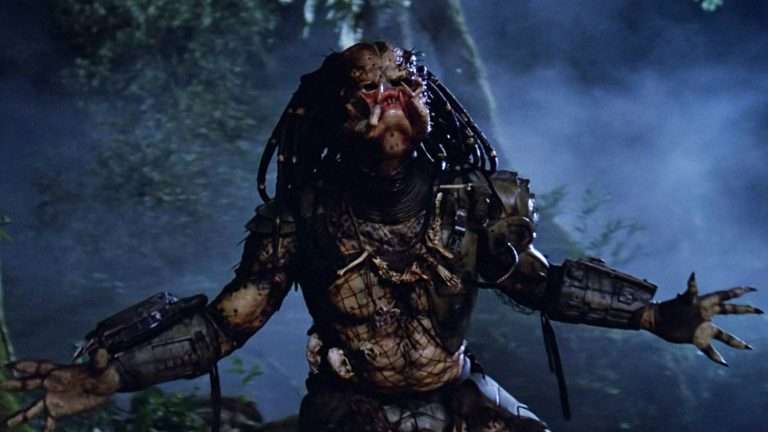

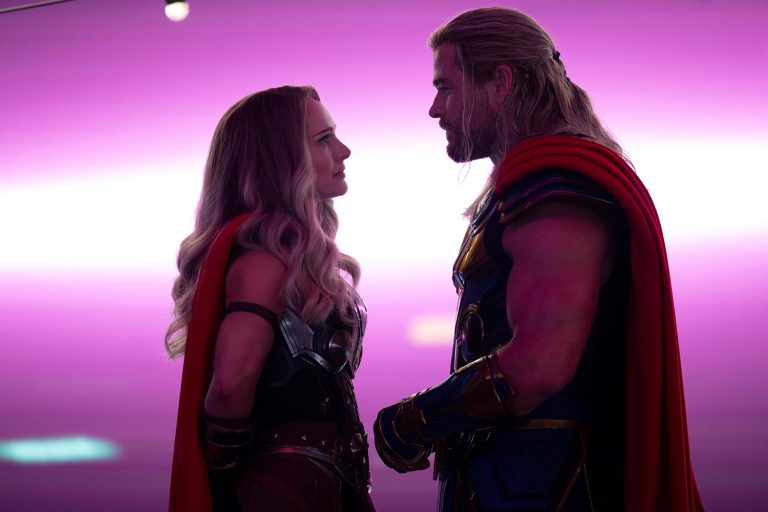
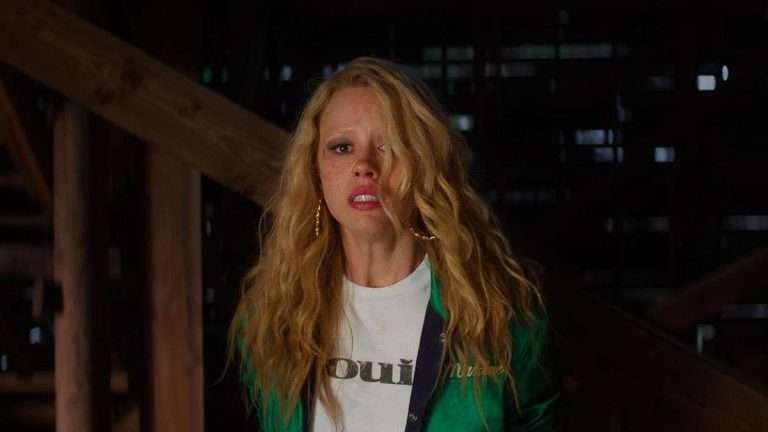
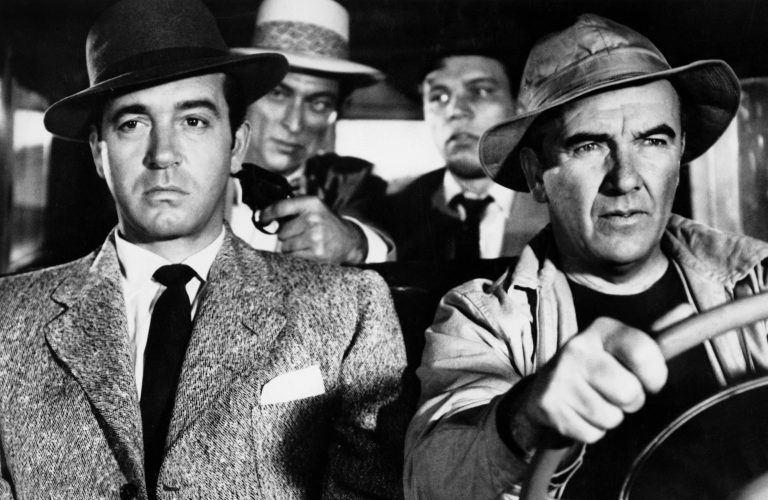
![Krisha [2016] : A Rotten Turkey](https://79468c92.delivery.rocketcdn.me/wp-content/uploads/2016/12/krisha-1-768x415.jpg)